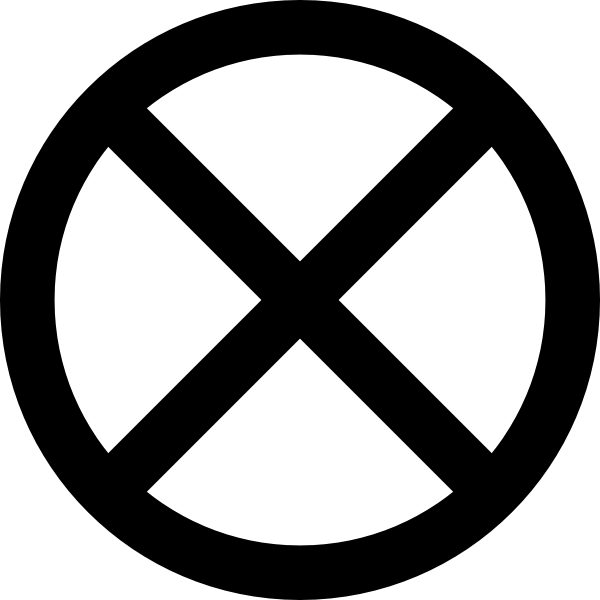As I learned later, the symbol was called a manji, and it is used to indicate Buddhist temples on Japanese maps. It was a Hindu symbol of good luck long before the Nazis used it. The Hindu manji is on it's side like a square, while the Nazi version is turned on a point like a diamond & is usually encased in a circle,
but they are similar enough to be confused for each other on first glance.That made me wonder what other map symbols there were which Japanese people take for granted.
Map symbols in Japan are called 地図記号 (chizu kigou) and this article will familiarize you with some of the more confusing ones, so that when your first encounter with a Japanese map will be less shocking than mine was.
Buddhist Temple: The manji, as mentioned before. It's pretty hard to forget after mistaking it for the symbol of the Nazis.
Shinto Shrine: This is a symbol of a toori (鳥居) gate like the ones found in front of Shinto shrines.
School: This is 文. Used in words like 文書.(bunsho, writing, text) It makes sense in a way because school is where Japanese children learn to write kanji. High schools use 文 with a circle around it.
Hot Spring: Note that this one will likely remind English speakers of a hot coffee/tea symbol, leading a lot of them to think it means "cafe".
Courthouse: No, that is not a tree. If it helps, think of it as the scales of Justice turned upside down, or a courthouse roof.
Museum: This is the one which I would think means "courthouse" by the shape. Don't mix them up!
Nuclear Power Plant: It looks sort of like a gear on a pipe. This is likely the most complex of the map symbols.
Town/Village Hall: It's a circle. Well, this one won't be too hard. A town hall is the center of a town. Another meaning of the word center is "the middle point of a circle or sphere". A city hall has a little circle within a big one.
Police Station: A circle with an X in it. In Japanese quiz shows an X denotes a wrong answer, while a circle denotes a right one. Right and wrong are parts of the justice system, which the police help enforce.
Factory: It's the gear from "power plant", or the sun.
Castle: It looks like a castle made out of legos.
Volcanic Crater: Let's hope you don't need this one. Nonetheless, it sort of looks like a more abstract version of the hot spring one, which might make it easier to remember.
There are even more, and those interested can check out the whole list on Wikipedia.
Think you remember them all, and have some experience with written Japanese?
There are also map symbols quiz games available on both the Apple App Store and Google Play Store. Just search for 地図記号.
Being familiar with map symbols before coming to Japan is really useful, as the symbols are so standardized that some maps, especially small ones on advertisements and such, do not include a symbol key.














No comments:
Post a Comment